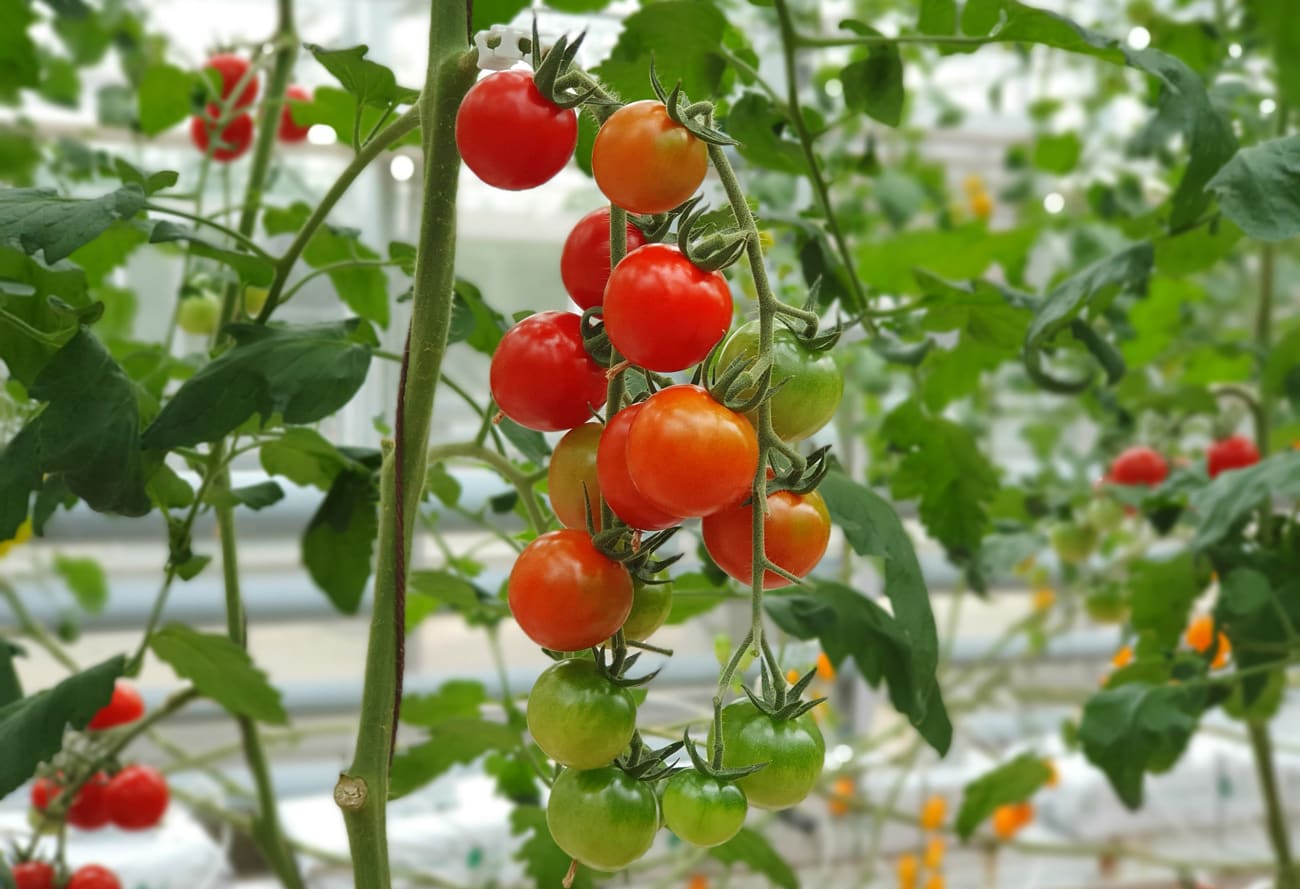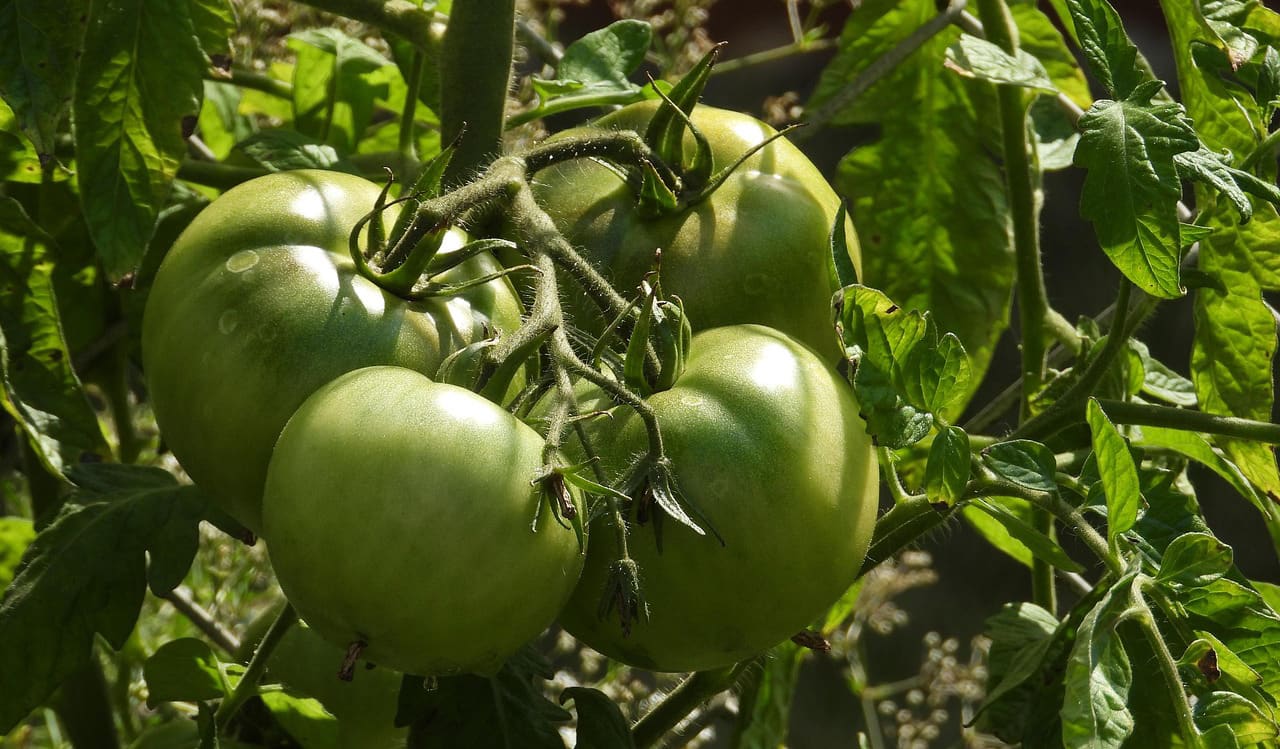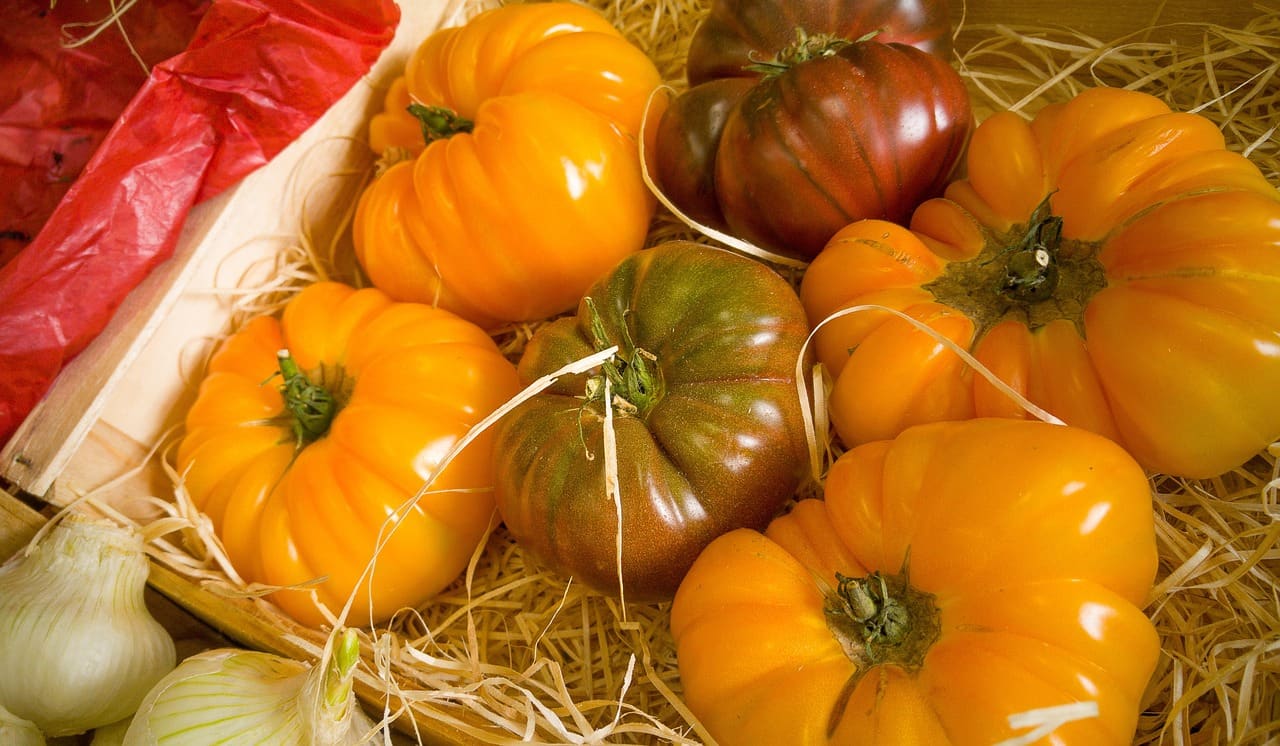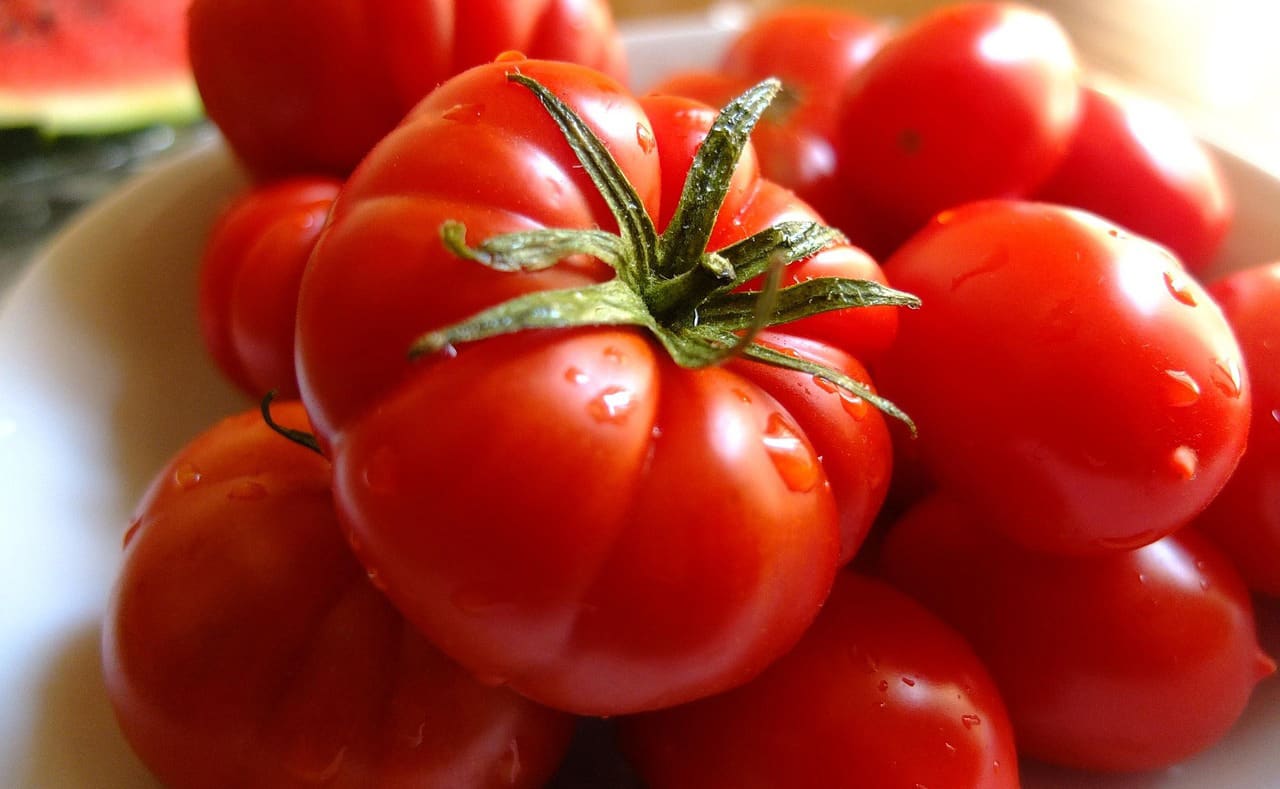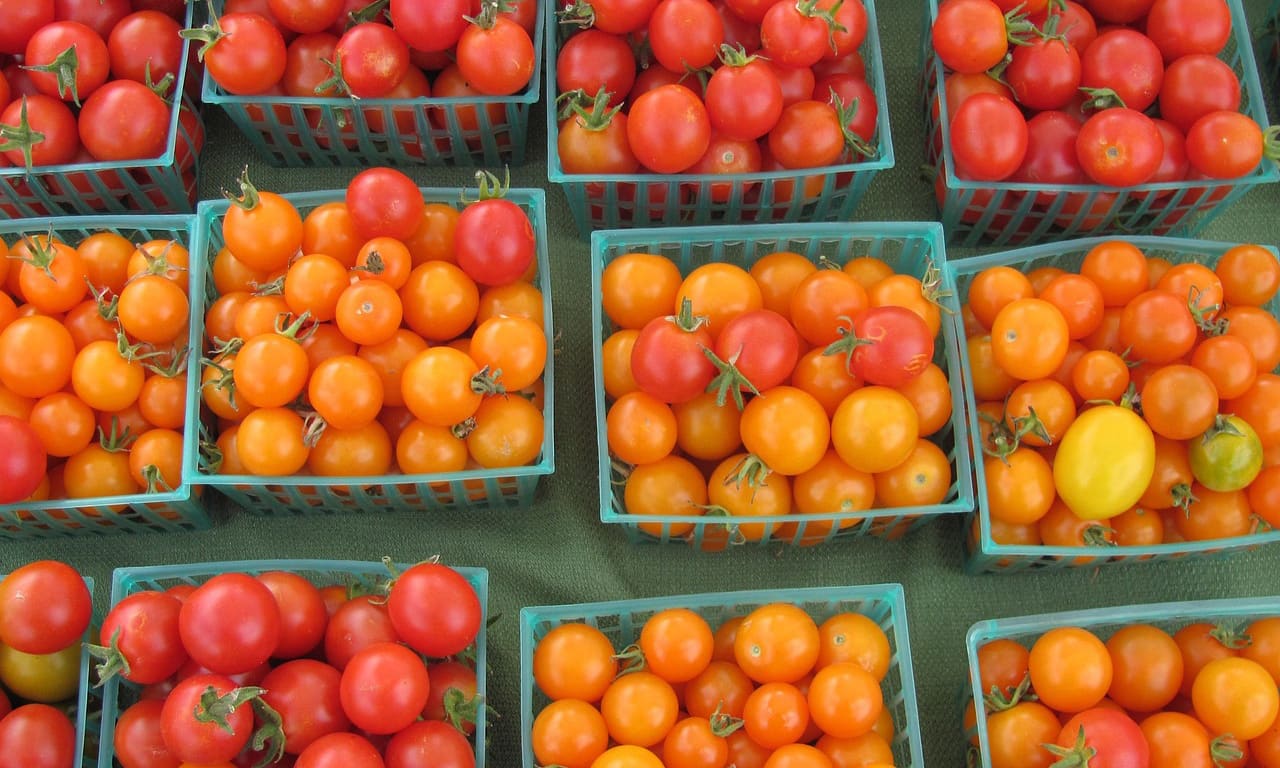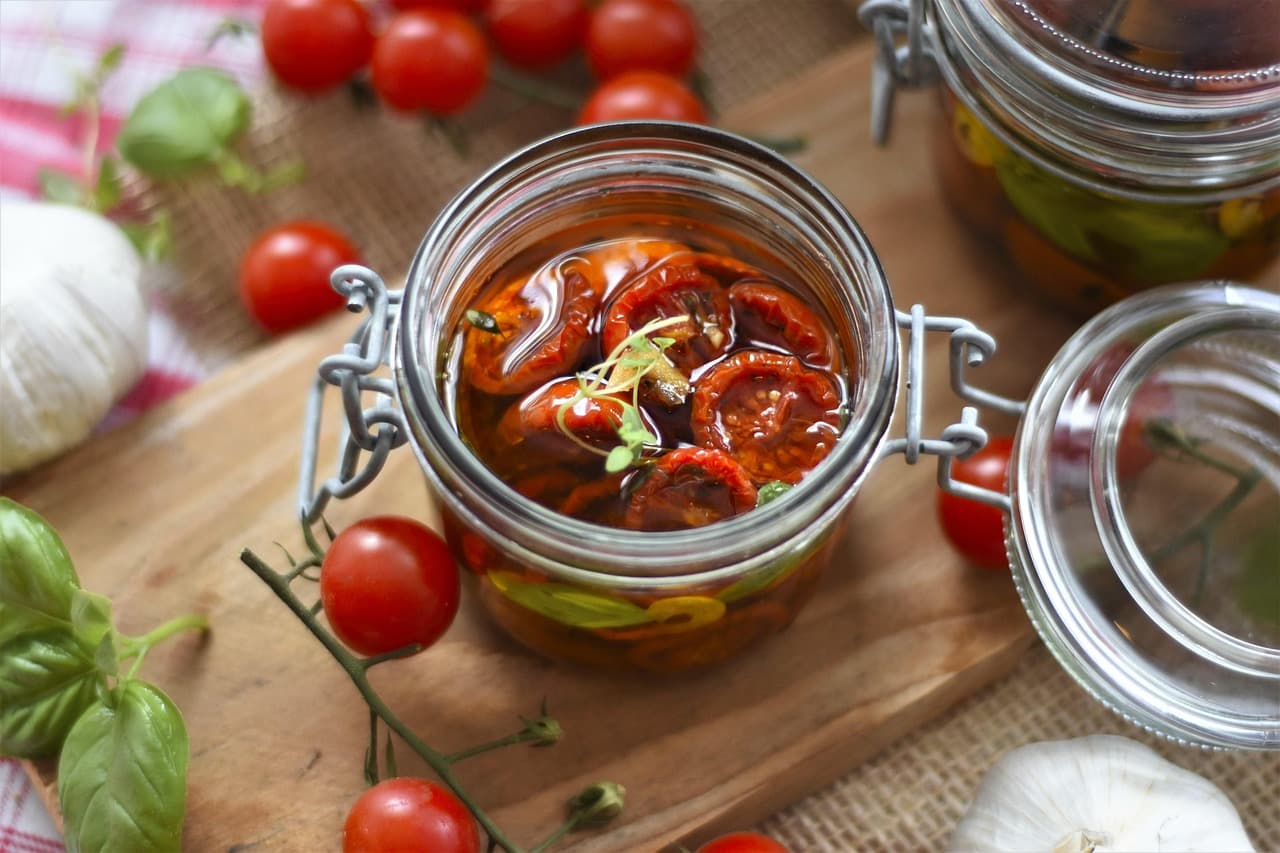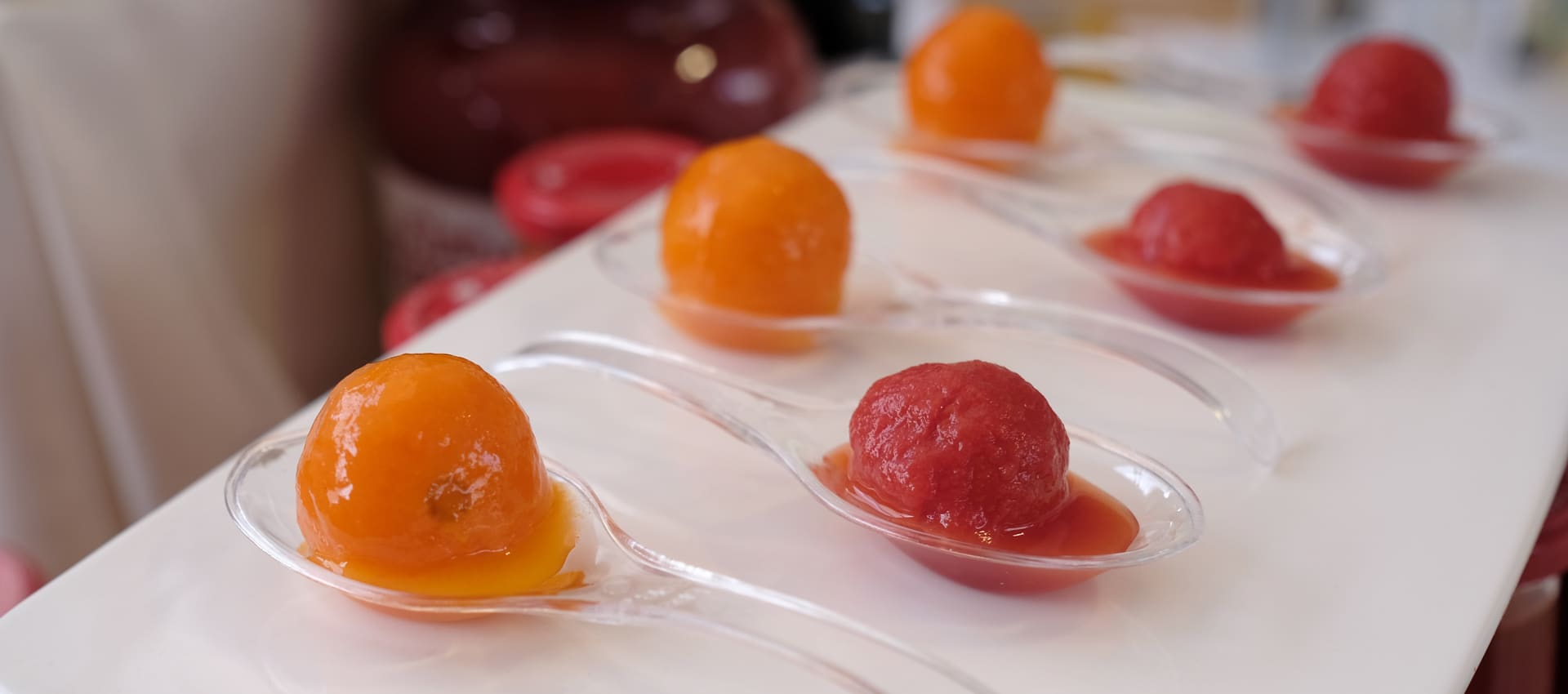
In recent decades, varieties have been selected specifically for intensive greenhouse farming and long shelf life: plants grown without soil, fed water enriched with nutrients and artificial light, capable of producing flawless fruits that last for weeks. There’s a trick and you can taste it: genes that slow ripening make tomatoes longer lasting, but they also block the formation of those aromatic compounds responsible for real flavor and fragrance. That’s why so many greenhouse tomatoes are bland, “plastic-like,” identical on the outside and anonymous to the palate.
How many times have we bitten into a beautiful-looking tomato only to find it watery, thinking with resignation that “tomatoes don’t taste like they used to”?
And yet, that lost flavor still exists, elsewhere. Experts confirm what our senses already suspect: a tomato grown hydroponically, in closed and controlled environments, can never have the aromatic richness of one grown in the earth and ripened under the sun. The difference is enormous.
In the first act we meet the soulless tomato, the product of industrial practices that prioritize aesthetics and durability at the expense of taste. In the second act, we will meet a different protagonist, alive, authentic and rooted in an ancient land.
The Taste of Sun and Sardinian Soil
In Sardinia, the tomato is reborn under generous sunshine and the salty winds of the Mediterranean. Imagine fields of green plants in soils scented with sea spray, warmed by the island climate: here each fruit ripens slowly, caressed by sunlight and marine breezes.
This unique environment, abundant sun, temperature swings, mineral-rich soils, forces the plant to work harder, producing less water and more aromatic compounds. It’s no coincidence that the tastiest tomatoes often grow near the sea: the slight “stress” of salt-tinged soil encourages the fruit to develop deeper flavors and more intense fragrances.
Just think of Pachino tomatoes, the same applies to Sardinia: here, the sea and the sun literally enter every bite.
In this ancient land, vegetable gardens follow natural rhythms. Sardinian farmers sow local varieties under open skies, without artificial lights or aggressive fertilizers. The Sardinian sun is unforgiving, but the Sardinian tomato loves it: it grows more slowly, digs deeper roots in search of nutrients and concentrates all the island’s character within its fruit.
Some even rediscover ancient, forgotten seeds. Agronomist Maurizio Fadda, for instance, has revived the “pomodoro grande sardo”, a native variety with a “stratospheric, incredibly tasty” flavor, said to outshine even the renowned Camone.
Ah yes, the Sardinian Camone: introduced in the 20th century precisely for its resistance to disease, it has become a symbol of excellence. This dark red round tomato with a green shoulder is instantly recognizable: it looks like a tiny globe, half green and half red, as if still marked by the sun that kissed it. A bite reveals firm, crunchy flesh and a fresh, lively taste, perfectly balanced between sweetness and acidity, with a hint of briny note, perhaps from the nearby sea. It’s an explosion of authentic sapidity that makes even the simplest salad unforgettable.
Alongside the Camone we find Sardinia’s cuore di bue, large and irregular in shape, with sweet flesh and very few seeds, perfect sliced raw for a summer caprese. And then there are the serbo tomatoes: small treasures with thick skin and sturdy stems, which Sardinians (like other southern peoples) hang in clusters to preserve through winter. These traditional varieties, grown outdoors without forcing, tell the story of the territory: each carries in its flavor the scorching August sun, the salty mistral breeze, the resilience of a tough land.
These are tomatoes that do not grow in an anonymous cube of rockwool, but in real soil, perhaps next to a dry-stone wall or beneath the sparse shade of an olive tree. The result is a fruit with soul: when you cut it open, it releases the intense scent of a “real” tomato, the kind we thought we had lost.
This richness is not just poetry, it is science and tradition together. For generations, Sardinians have preserved their flavors: in the 19th century, they were already sun-drying tomatoes to enjoy them through winter. Local biodiversity, safeguarded in seeds passed down and exchanged between farmers, is now being enhanced by cooperatives and research projects.
Brands such as “iLcamone quello vero” and “Moro Sardo” protect the authenticity of the Sardinian tomato, ensuring it is grown exclusively on the island and harvested by hand at the right degree of ripeness.
In Sardinia, the tomato is part of the cultural heritage, like a traditional song or a costume: a living element of local identity, respected and protected as a product of excellence.
A Red Heart for Your Health and Your Table
If the second act made your mouth water, the third will show you that authentic flavor goes hand in hand with wellbeing and tradition.
Every juicy Sardinian tomato is a concentrate of precious substances. Its intense red color is not just beautiful: it’s due to lycopene, a powerful natural antioxidant that helps neutralize free radicals, slowing cellular aging and protecting skin and tissues from oxidation. Lycopene, together with carotenoid “cousins,” has been studied for possible anti-inflammatory and anticancer effects and even as an ally in protecting the skin from sun damage.
ADVERTISMENT
But the health benefits don’t end there. The Sardinian tomato, grown in rich, healthy soil, provides essential vitamins (especially C and K) and minerals such as potassium, phosphorus and magnesium. Thanks to this mix of antioxidants, low calories and zero fat, it’s considered a friend of the heart: it helps regulate blood pressure, improves circulation and helps keep cholesterol in check.
Eating well-ripened tomatoes regularly can truly support our cardiovascular system.
Every tomatiga (as tomatoes are called in Sardinian) is 94% water and contains light fibers and enzymes that aid digestion. This means hydration, satiety without heaviness and a happy gut. Remember those old remedies for summer thirst? A ripe tomato was and remains, the perfect snack: refreshing, rehydrating and mineral-rich. No wonder people in the countryside used to say, “A tomato keeps the doctor away almost as well as an apple!”
But beyond the nutritional data, there is more: the Sardinian tomato carries the culture of a people.
This fruit of the earth has earned a place of honor in island kitchens. Think of traditional preparations: homemade tomato sauce, for example, is a communal ritual that repeats every late summer. Entire families gather to boil, press and bottle local tomatoes, often with a sprig of basil, capturing the scent of summer in a jar to release during the colder months.
Even a century ago, writers praised these preserves: “The Sardinian tomato… is good eaten in salad, it is good as a fresh sauce, it is good as a preserve,” wrote a 19th-century chronicler, celebrating in particular the passata made at home with basil, marjoram and even a touch of coriander, calling it “a true blessing.” These are ancient gestures, speaking of self-sufficiency and love for genuine food.
The Sardinian tomato enters countless local recipes. There’s the simple snack of bread and tomato: rustic bread rubbed with ripe tomato pulp, a drizzle of extra virgin olive oil and a pinch of salt, nothing fancy, yet each bite reveals the sweetness of the garden and the refreshing acidity that quenched children’s thirst in summertime.
Then come the more elaborate dishes. In Sulcis, for instance, you find mustazzeddu (or fogazza cun tamatiga): a semolina focaccia filled with fresh tomato, garlic and basil, wood-fired, golden on top and juicy inside. It’s a rustic summer recipe that unites Sardinia’s two great agricultural treasures, durum wheat and tomatoes, in an embrace of flavor.
Elsewhere, people prepare Camone tomato salads with local sweet onions and basil; or they use clusters of serbo tomatoes, hung to dry, to enrich winter soups with color and acidity. Not to mention sun-dried tomatoes in oil: in Sardinia too, tomatoes are halved, salted and sun-dried before being preserved in olive oil with garlic and herbs, tiny chests of flavor that brighten pastas, fennel salads and side dishes during the colder months.
In short, the Sardinian tomato is not just an ingredient: it is collective memory and everyday habit. Every recipe passed down is an act of love toward this red fruit, which transforms humble dishes into experiences rich in flavor and authenticity.
From the previous acts, we’ve learned that a good tomato makes all the difference, in taste, in health and in culture.
And the good news is that more and more people are noticing. Across Europe (and beyond), farmers’ markets and heirloom seed networks are blossoming, bringing back those authentic flavors that industrial production had flattened. In Sardinia too, young farmers and guardians of biodiversity continue this mission: they grow local tomato varieties in the open air, respecting natural cycles and offer them through zero-kilometer channels.
The result?
Not just tastier tomatoes, but a truly sustainable agricultural model, rooted in the land and its traditions.
We’ve followed the story of a tomato: from the soulless illusion of industrial hybrids, to the rebirth of flavor in the sun-drenched fields of Sardinia, to its celebration in the kitchen and in our hearts (and stomachs!).
Now it’s up to us, in our own small way, to put this lesson of authenticity into practice. Here are a few practical takeaways for bringing real tomatoes, genuine, healthy and rich in culture, to your table:
Choose local, seasonal quality: next time you shop, look for sun-ripened, freshly harvested tomatoes. Prefer farmers’ markets or community-supported agriculture and prioritize local production (even better if Sardinian, when available). Avoid out-of-season tomatoes that are all identical and firm, coming from intensive crops far away, they’ve traveled long distances and lost flavor. A truly good tomato has a short shelf life because it’s picked ripe, eat it fresh, at its aromatic peak.
Discover (and grow) heirloom varieties: try Camone, Cuore di Bue, serbo tomatoes or other local types whenever you can. If you have a garden, even a balcony pot can be enough, why not plant some seeds? These are often hardy plants adapted to tough climates; many serbo tomatoes don’t even require frequent watering. Growing them yourself means rediscovering the pleasure of picking a sun-warm tomato and eating it on the spot, its juice tasting of pure summer.
Enjoy tomatoes simply and healthily: to truly appreciate a quality tomato, you don’t need complicated recipes. Do as they do in Sardinia: rustic bread, ripe tomato rubbed over it, a drizzle of olive oil and a pinch of salt, a nutrient-rich, flavorful snack full of vitamins and antioxidants. Or prepare a bruschetta or Camone tomato salad with basil and a touch of sea salt, you’ll taste all the sweet-acidic contrast and natural sapidity of the fruit.
What are you waiting for?
Visit a farmers’ market, go to a local farm or even plan a trip to Sardinia to discover the island’s agricultural producers. Every opportunity is perfect to get your hands (and teeth) on a real sun-ripened Sardinian tomato. Try the experience yourself: bite into a freshly picked tomato and let its sweet-tart juice tell you stories of sun, earth and ancient traditions.
You’ll realize how unforgettable authentic flavor can be. Once you’ve tasted it, you’ll hardly go back.
Start this rediscovery today: your palate (and your heart) will thank you. Buon appetito or as they say in Sardinia, bona apetidu!
For your Advertising
A simple and targeted opportunity to be found by those looking for experiences in the area.
Learn moreAuthentic Flavors of Sardinia:
